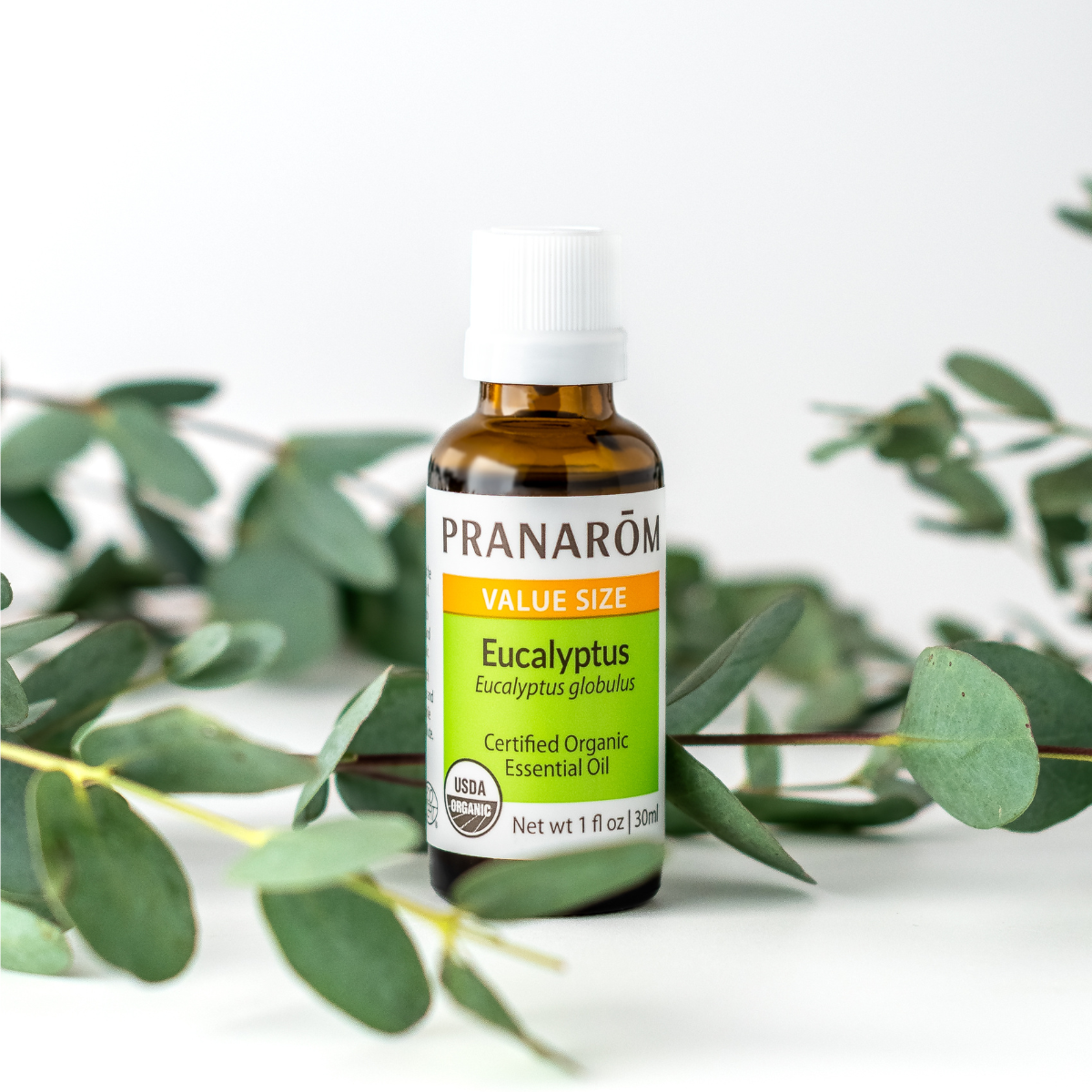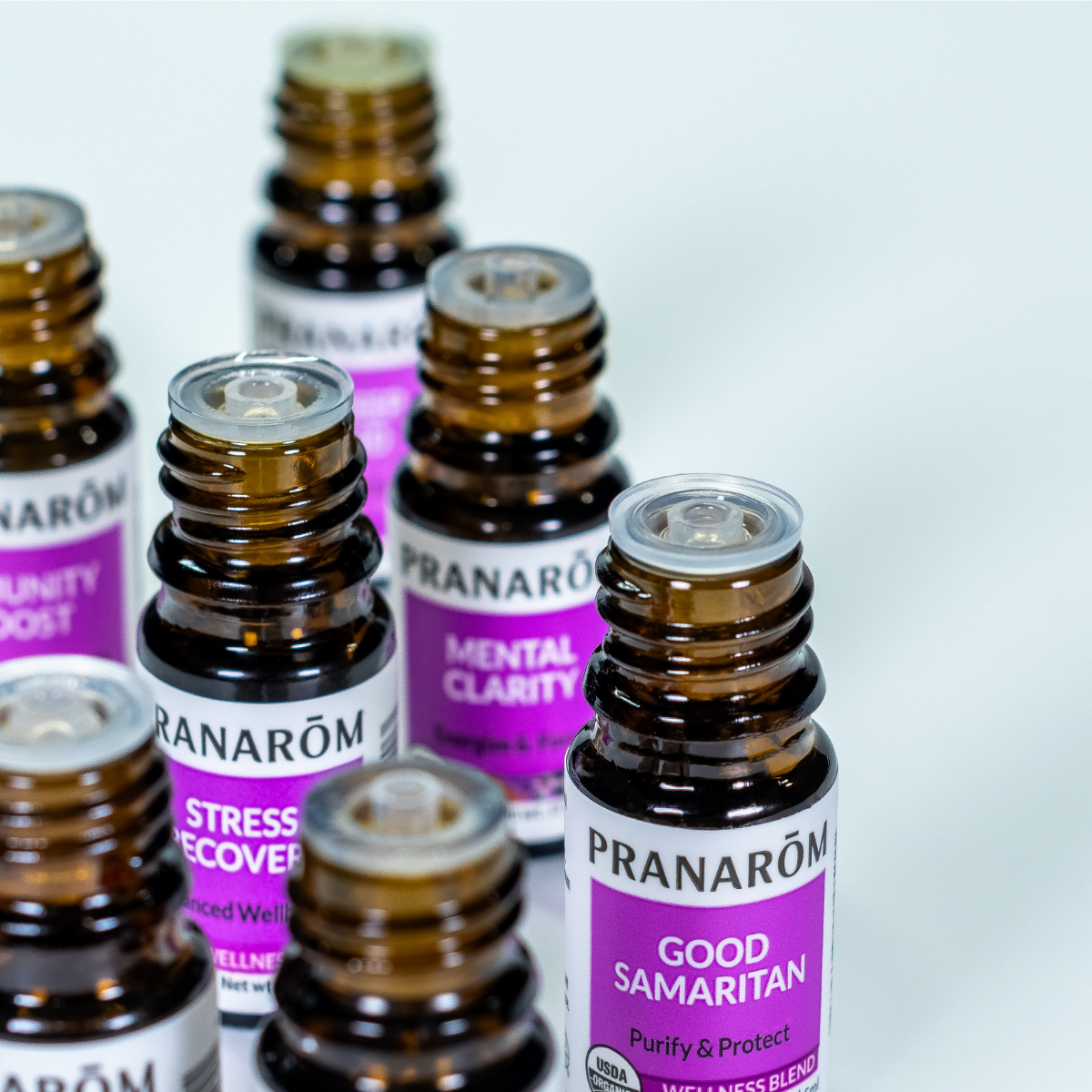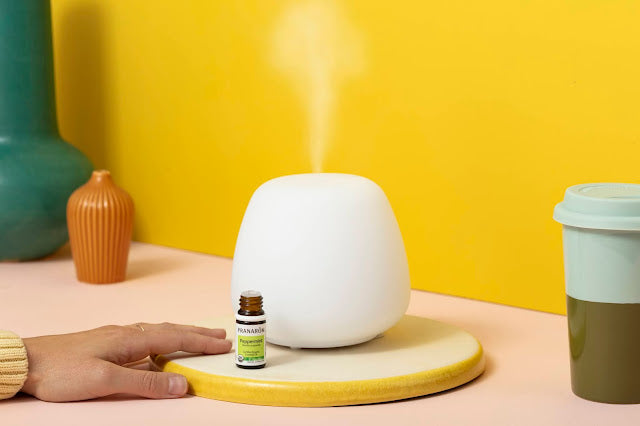Do you have an ultrasonic diffuser, or are you thinking of buying one? In this article we’ll take a look at why they’re so great for aromatherapy and cover some common Q&A.
How Do Ultrasonic Diffusers Work?
Ultrasonic diffusion is the aerial suspension of water and essential oils with very high frequency ultrasonic waves (16 to 20 megahertz). Ultrasonic diffusion is a “cold-spread” method, so it doesn’t damage the essential oil molecules through heat. Ultrasonic diffusers are beneficial for several reasons:
- They break down essential oils into very small particles. When these particles are inhaled, they are quickly transferred from the lungs to the bloodstream, where the body can utilize their benefits.
- The device generates a flow of negative ions, which can help produce the refreshed feeling one gets near moving water, or after a rainstorm.
- Regular use of ultrasonic diffusers can put the equivalent of half a liter of water per day into aerial suspension. This can help increase the humidity of our often ‘dry’ living spaces due to heating or air conditioning systems.
- With ultrasonic diffusers, it’s easy to control the intensity and range of diffusion according to your needs.
What Type of “Waves” Do Ultrasonic Diffusers Create?
An ultrasonic wave is a very high frequency sound wave (in this case, 16 to 20 megahertz), which is therefore inaudible. This is similar to the sound waves emitted by bats for orientation or location in space. These sound waves have nothing to do with electromagnetic waves emitted by mobile phones or microwaves and are completely free of health hazards.
How Do I Clean My Diffuser?
Try to clean your diffuser at least once a month. To do this, gently warm white vinegar in the microwave or in a saucepan over the stove until it reaches 110 – 120º F. This should feel warm to the touch, but not hot. Pour the warm vinegar into the water tank of your diffuser.
Do not turn the device on – just let the vinegar sit for about ten minutes, then empty into your sink. Swab out the water tank with a cotton ball, then rinse with lukewarm water. Finish by gently drying with a hand towel.
If the bottom of the container is stained with essential oil, wipe the inside surfaces of the diffuser with rubbing alcohol to remove any residue.
Why Isn’t My Ultrasonic Diffuser Producing Mist?
Several factors can lead to low mist production:
- Use of distilled water: tap water or spring water are the best for your diffuser.
- Filling the water tank too high.
- Filling the water tank too low. Our devices will automatically shut down due to lack of water, or following the end of the selected diffusion time.
How Much Essential Oil Should I Use in My Diffuser?
This will differ for each essential oil, but here are a couple general guidelines to follow:
- For a 65 to 95 square foot space: from 5 to 10 drops.
- For a 130 to 325 square foot space: 10 to 20 drops.
Can I Diffuse Any Essential Oil with My Ultrasonic Diffuser?
Some essential oils are irritating to the lungs when diffused. These should only be diffused when professionally blended with other essential oils, or in very small amounts with the advice of a practitioner. Most often, these oils are actually more effective when applied using a different method, i.e. topical application or DIY cleaning products. If in doubt, check our website for specific essential oil recommendations.
Final Thoughts
Diffusion is a great way to enjoy essential oils and the benefits they provide. As always, we recommend starting with a few drops, and adding more once you discover your preferences. It can be really fun to develop your own blends and experiment with new aromas. If you don’t feel like blending your own synergies, try some of our diffusion blends!











